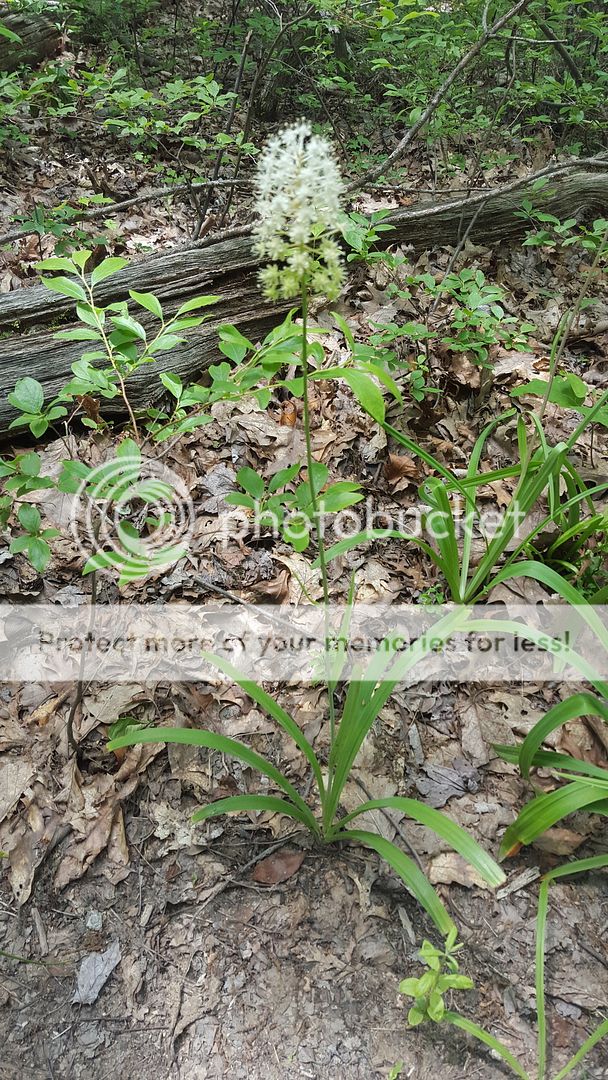
Sorry for the photo quality, my friends have low tolerance for my plant fascination while we ride

Fly Poison - Shenandoah National Park (U.S. National Park Service)
https://www.nps.gov/shen/learn/nature/fly_poison.htm
Common Names:
Common names include fly poison, crow poison, stagger grass. The common name ¡°fly poison¡± is a literal translation of the Latin name ¡°muscaetoxicum¡± (muscae=flies, toxicum=poison) given the plant by Thomas Walter in 1788 when he published his wildflower book Flora Caroliniana.
Other Facts:
Although all parts of the plant contain toxins, the bulbs are the most toxic.
The alkaloids in the plant act as neurotoxins commonly affect sheep and cattle when ingested. Other livestock can be affected as well, including goats and rabbits.
[…]
If the animal has ingested large amounts of the plant (¡Ã0.3% body weight of green plant for sheep and cattle), they may die from respiratory failure within the first day. No effective treatment is available to prevent death of effected animals; however, symptoms can be treated by keeping animals quiet, giving them sedatives, and administering gastric protectives by stomach tube.
The Cherokee used the plant topically to stop itching. They also used the root to poison crows. Exploiting the bulb's toxicity, early American settlers ground the bulb into a paste and mixed it with sugar or honey to attract and kill flies.
Fly poison is similar in appearance to two other North American wildflowers that are also in the Lily family. The eastern turkeybeard (Xerophyllum asphodeloides) can be found growing in the same areas as fly poison and has basal leaves and a long stalk bearing a plume of white flowers. However, turkeybeard has much narrower leaves and the flower cluster is typically more rounded.
Bear grass (Xerophyllum tenax) is a Western relative of fly poison and turkeybeard and can be found throughout the meadows and woods from Coloradoand Montana west.